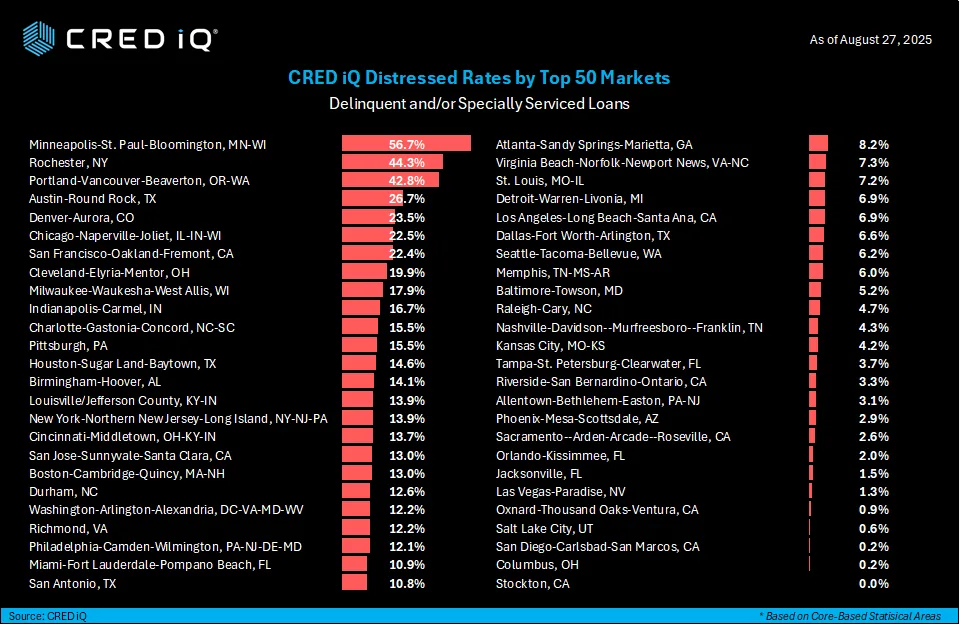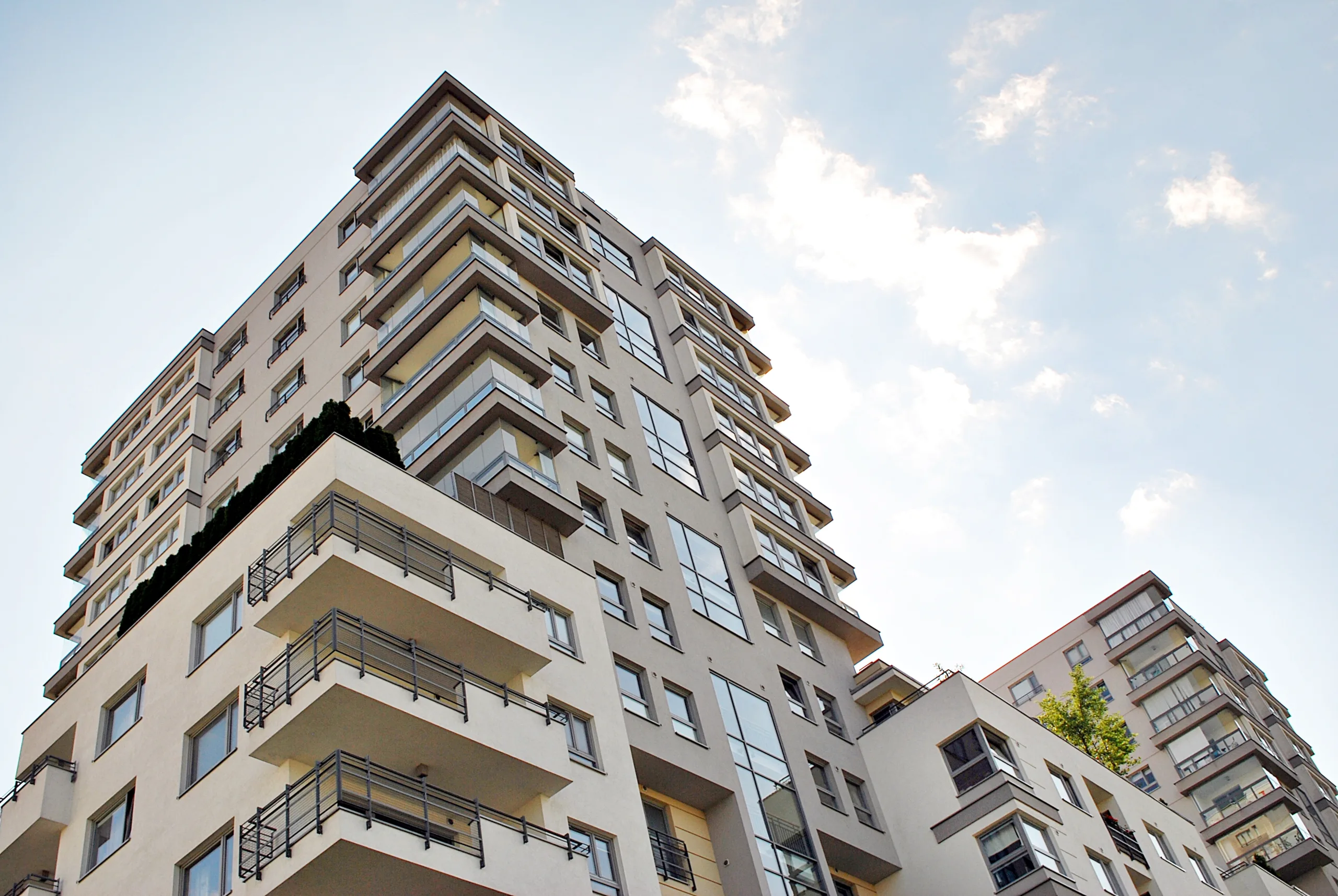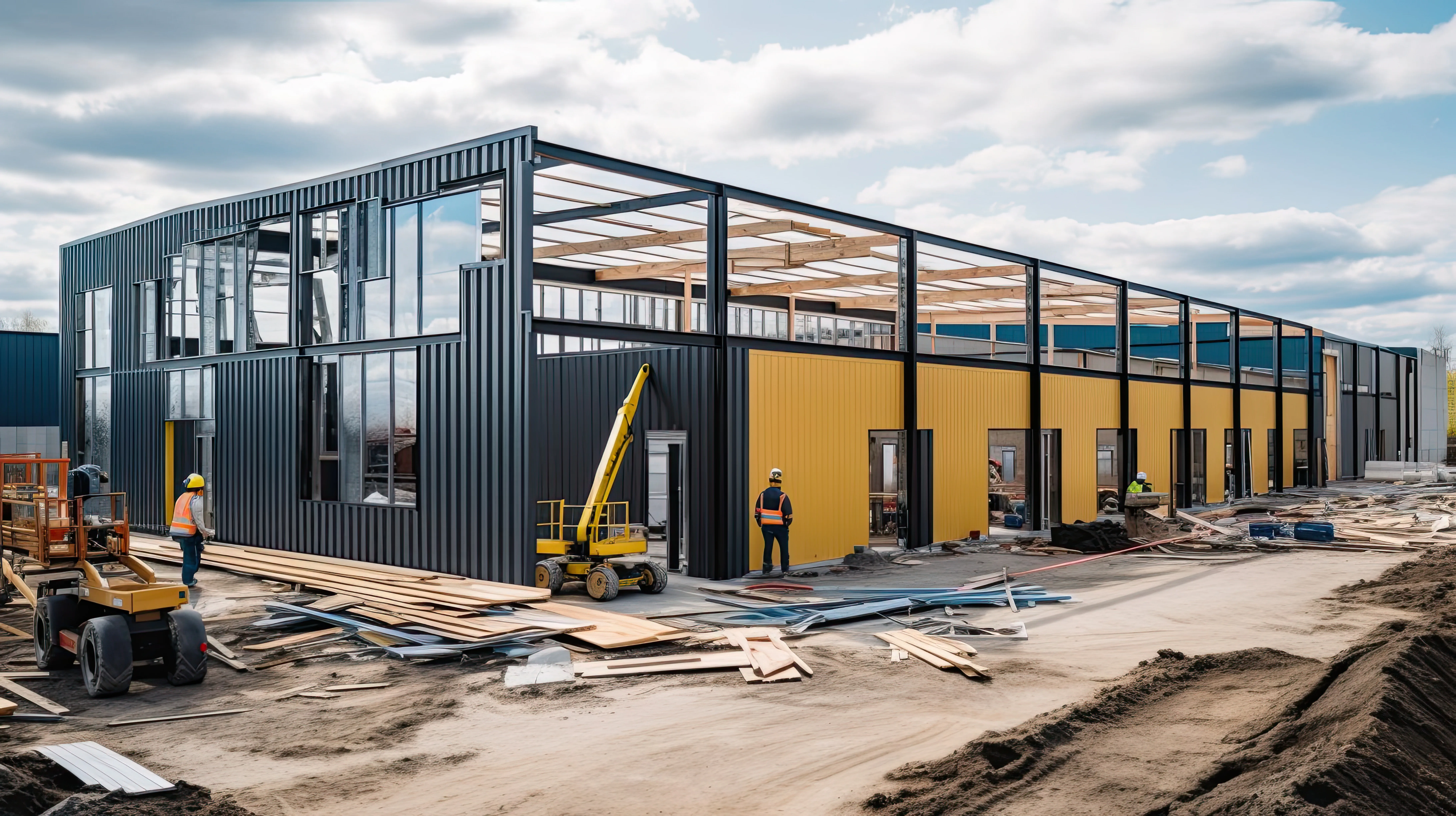- Minneapolis-St. Paul-Bloomington leads the US with a 56.7% distress rate, followed by Rochester, NY (44.3%) and Portland, OR (42.8%).
- Stockton, CA, Columbus, OH, and San Diego, CA rank among the most stable markets, with distress rates below 0.3%.
- Austin’s 7700 Parmer office property, a 911,579 SF asset tied to a $177M loan, illustrates why the city ranks among the top distressed markets.
- The uneven CRE recovery means high-distress regions may demand caution, while low-distress markets could offer steadier opportunities.
A Market Under Pressure
As Labor Day approaches, CRED iQ has taken a close look at the health of commercial real estate nationwide. The firm reviewed $341.1B in loans across the 50 largest US markets, flagging those either delinquent or transferred to special servicing. From that, researchers calculated a “distress rate”—the share of loans in trouble.
The results reveal sharp regional divides. Minneapolis-St. Paul-Bloomington tops the list at 56.7%, followed by Rochester, NY (44.3%) and Portland-Vancouver-Beaverton, OR-WA (42.8%). Austin-Round Rock, TX (26.7%) and Denver-Aurora, CO (23.5%) round out the top five.
On the opposite end, Stockton, CA posted a 0.0% distress rate, while Columbus, OH (0.2%), San Diego-Carlsbad-San Marcos, CA (0.2%), Salt Lake City, UT (0.6%), and Oxnard-Thousand Oaks-Ventura, CA (0.9%) all registered well below 1%.

Spotlight: 7700 Parmer, Austin
Austin’s inclusion among the most distressed markets is underscored by the case of 7700 Parmer, a 911,579 SF office property backed by a $177M loan now in special servicing.
- Loan Status: Interest-only, maturing December 2025, no extension options.
- Tenants: Google (33%, lease exp. 2027), Electronic Arts (19%, exp. 2026), eBay (10%, exp. 2028).
- Occupancy: 74%
- DSCR: 1.96
Despite solid coverage on paper, market headwinds and tenant uncertainty pushed the loan into distress, reflecting broader challenges in office-heavy portfolios.
Why It Matters
The uneven distribution of distress rates highlights the fragmented recovery of US commercial real estate. Office vacancies, economic shifts, and tenant retention continue to pressure certain markets, while others remain relatively insulated.
For investors and lenders, high-distress metros like Minneapolis, Rochester, and Austin may require greater caution and underwriting discipline. Meanwhile, low-distress markets such as Stockton and Columbus may offer more resilient opportunities in an otherwise uncertain environment.
What’s Next
As distressed loan volumes grow, the coming quarters will be telling for US CRE. Markets with outsized exposure to office properties remain particularly vulnerable. Investors should expect regional divergence to persist, with opportunities emerging where fundamentals and tenant demand remain strongest.
Get Smarter about what matters in CRE
Stay ahead of trends in commercial real estate with CRE Daily – the free newsletter delivering everything you need to start your day in just 5-minutes

















